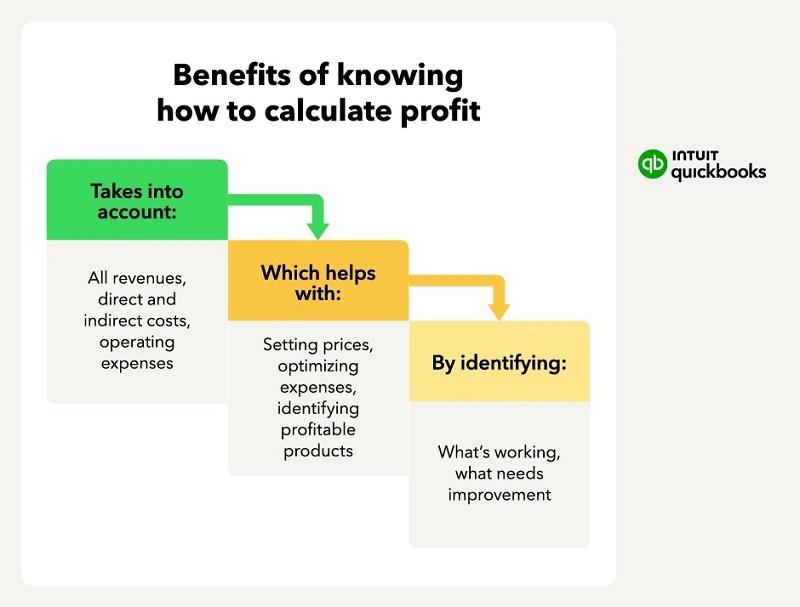
From Cash-Strapped to Cash-Confident: The Cash Flow Guide for Entrepreneurs
February 2, 2024
Small Business Owners! Choose the Right Way to Get Paid: Owner’s Draws vs Payroll Salaries
February 13, 2024Part 1: Demystifying Accounting for Small Businesses
Introduction: Why Formulas Matter for Your Small Business
Navigating the world of finance can feel daunting for any small business owner. Budgets, profit margins, and cash flow might seem like mysteries reserved for accounting wizards. But the truth is, understanding a few key formulas can empower you to take control of your finances and make informed decisions for your business growth.
This article unveils the 7 Essential Accounting Formulas for Small Business Owners. By demystifying these formulas and their practical applications, you’ll gain valuable insights into your business’s financial health, profitability, and future potential.
Understanding the Accounting Fundamentals
Before diving into specific formulas, let’s establish a solid foundation. The financial health of your business hinges on three core financial statements:
- Balance Sheet: This snapshot captures your assets (what you own), liabilities (what you owe), and equity (the net worth of your business) at a specific point in time.
- Income Statement: This report summarizes your income (revenue) and expenses over a particular period, revealing your net profit or loss.
- Cash Flow Statement: This statement tracks your cash inflows and outflows, highlighting your business’s ability to generate and manage cash, crucial for day-to-day operations.
These statements interweave, forming the foundation for the 7 formulas we’ll explore. By understanding these core concepts, you’ll unlock a deeper understanding of the formulas’ significance and their impact on your business.
Mastering the 7 Essential Formulas
Here’s where the magic happens! Buckle up as we delve into each formula, equipped with real-world examples to illuminate their practical applications:
Formula 1: Cost of Goods Sold (COGS)
- Formula: COGS = Beginning Inventory + Purchases – Ending Inventory
- Understanding: This formula reveals the direct cost of producing the goods or services you sell. By understanding your COGS, you can optimize pricing, manage inventory efficiently, and analyze profitability.
- Example: A bakery starts the month with $2,000 worth of ingredients, purchases $5,000 more, and ends the month with $1,000 remaining. Their COGS is $2,000 + $5,000 – $1,000 = $6,000.
Formula 2: Gross Profit Margin
- Formula: Gross Profit Margin = (Revenue – COGS) / Revenue * 100%
- Understanding: This ratio measures the efficiency of your core operations by expressing how much profit you earn from each dollar of sales after accounting for the direct cost of goods.
- Example: With a revenue of $10,000 and COGS of $6,000, the bakery’s gross profit margin is ($10,000 – $6,000) / $10,000 * 100% = 40%.
Formula 3: Break-Even Point
- Formula: Break-Even Point = Fixed Costs / (Selling Price per Unit – Variable Cost per Unit)
- Understanding: This formula reveals the sales volume required to cover your total costs (both fixed and variable) and avoid losses. It’s crucial for planning production, pricing, and marketing strategies.
- Example: The bakery has $3,000 in fixed monthly costs. Each cake costs $5 in variable costs and sells for $10. Their break-even point is $3,000 / ($10 – $5) = 600 cakes per month.
Formula 4: Working Capital
- Formula: Working Capital = Current Assets – Current Liabilities
- Understanding: This metric measures your short-term financial health, indicating your ability to cover current expenses with readily available assets. A positive working capital signifies your ability to meet short-term obligations, while a negative value suggests potential liquidity issues.
- Example: A restaurant has $20,000 in cash and inventory (current assets), but owes $15,000 to suppliers (current liabilities). Their working capital is $20,000 – $15,000 = $5,000, indicating a healthy short-term financial position.
Formula 5: Inventory Turnover
- Formula: Inventory Turnover = Cost of Goods Sold / Average Inventory
- Understanding: This ratio reveals how efficiently you manage your inventory. A higher turnover indicates faster inventory movement, reducing storage costs and potential obsolescence. A low turnover might suggest overstocking or slow sales.
- Example: The clothing boutique sells $100,000 worth of clothes and maintains an average inventory value of $20,000. Their inventory turnover is $100,000 / $20,000 = 5, implying they sell their inventory roughly 5 times per year.
Formula 6: Debt-to-Equity Ratio
- Formula: Debt-to-Equity Ratio = Total Liabilities / Total Equity
- Understanding: This ratio measures your reliance on debt financing compared to your own equity (investment). A higher ratio indicates greater financial risk, while a lower ratio suggests conservative financing and potentially limited growth opportunities.
- Example: A bakery has $50,000 in debt and $100,000 in owner equity. Their debt-to-equity ratio is $50,000 / $100,000 = 0.5, indicating a moderate level of debt reliance.
Formula 7: Days Sales Outstanding (DSO)
- Formula: DSO = Accounts Receivable / Average Daily Sales * Number of Days
- Understanding: This metric reveals the average time it takes customers to pay their invoices, impacting your cash flow. A high DSO suggests slow collections and potential cash flow issues, while a lower DSO indicates efficient collection practices.
- Example: A consulting firm has $20,000 in outstanding invoices and generates $1,000 in average daily sales. Assuming a 30-day month, their DSO is $20,000 / $1,000 * 30 = 60 days, highlighting a need for improved collection strategies.

Part 2: Empowering Your Financial Journey
Putting the Formulas into Practice
Now that you’re equipped with the 7 essential formulas, let’s explore how they translate into tangible action for your small business:
- Embrace technology: Ditch the spreadsheets! Leverage accounting software designed for small businesses. These tools automate calculations, generate reports, and provide valuable insights, freeing up your time for strategic decision-making.
- Track performance consistently: Don’t wait for tax season to review your finances. Regularly calculate and analyze these formulas to monitor your progress, identify areas for improvement, and make informed adjustments.
- Benchmark against industry standards: Compare your key financial ratios (like gross profit margin) with industry benchmarks to gauge your competitive standing and potential areas for optimization.
Bonus Tip: Consider working with a financial advisor or bookkeeper. Their expertise can guide you in interpreting financial data, strategizing for growth, and ensuring compliance with financial regulations.
Example: A clothing boutique owner consistently calculates their break-even point to adjust production runs based on seasonal trends and optimize marketing campaigns to reach wider audiences, ultimately exceeding their sales goals.
Common Challenges and Solutions
Even the most enthusiastic entrepreneur faces financial hurdles. Here are some common challenges and practical solutions to navigate them:
- Data accuracy: Ensure accurate data entry in your accounting software to avoid misleading calculations and skewed decision-making. Double-check entries regularly and reconcile bank statements.
- Understanding terminology: Don’t get lost in financial jargon! Utilize online resources, workshops, or consult with professionals to clarify terminology and gain financial literacy.
- Interpreting results: The formulas provide valuable insights, but understanding their context and implications requires practice. Analyze trends over time, consult industry benchmarks, and seek professional guidance if needed.
Remember: Financial management is a continuous learning process. Embrace challenges as opportunities to improve your financial acumen and build a thriving business.

FAQs: Demystifying Financial Jargon
Let’s tackle some frequently asked questions to solidify your understanding:
Q: What’s the difference between profit and cash flow?
- A: Profit reflects your overall income earned after expenses, while cash flow tracks your actual movement of cash in and out of the business. Both are crucial indicators of financial health, but serve different purposes.
Q: How often should I update my financial statements?
- A: Ideally, update your statements monthly or quarterly to track progress and identify trends. More frequent updates might be necessary depending on your business activity.
Q: What resources can help me understand my finances better?
- A; Numerous online resources, workshops, and educational platforms offer guidance on small business accounting. Consider joining industry associations or seeking professional advice tailored to your specific needs.
Pro Tip: Visualize your financial data through charts and graphs to gain clearer insights and identify patterns that might be missed with numbers alone.
Conclusion: Embracing Financial Fitness for Your Business Success
By embracing financial literacy, actively utilizing these formulas, and leveraging available resources, you empower yourself to make informed decisions, navigate challenges, and ultimately propel your small business towards a prosperous future. Remember, financial fitness is a journey, not a destination. Celebrate your progress, stay curious, and keep growing!
Resources and Support for Small Businesses
You’re not alone on your financial journey! Here are some valuable resources to empower your small business:
Government agencies:
- Offers free financial counseling and educational resources for small businesses
- Provides financial assistance, counseling, and training programs for entrepreneurs
Industry associations:
National Association of Women Business Owners
- Supports and advocates for women entrepreneurs
National Small Business Association
- Represents the interests of small businesses nationwide
Online tools and platforms:
- Offers bookkeeping and accounting services tailored for small businesses
- Free and paid accounting software designed for small businesses
Remember, seeking professional guidance can be invaluable, especially during complex financial situations or periods of rapid growth.




